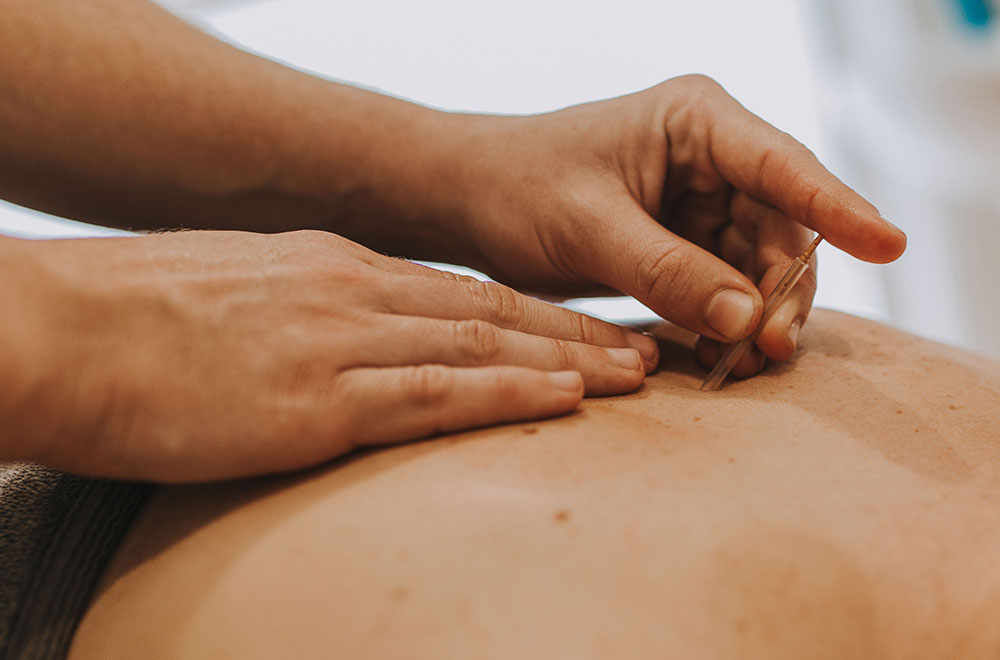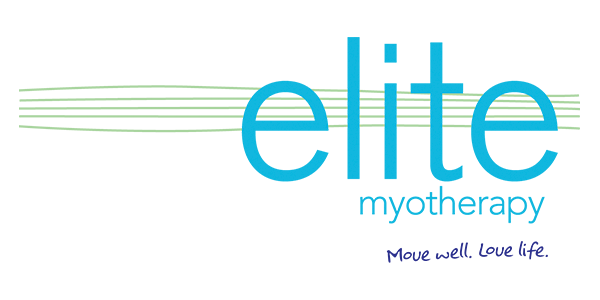
Dry Needling Therapy
Dry-Needling therapy can greatly benefit your treatment in dealing with sore, stiff or tight areas of your body. Here we educate you on what it is and how it works!
It is important to give you some background information on the body and where pain can come from, before we explain dry-needling.
Our (voluntary) muscles together make up the largest organ in the body, yet in modern medicine muscles receive very little attention. Ironically our muscles are very susceptible to wear and tear from daily activities. However it is joints, bones, nerves and bursae on which most practitioners focus their attention.
When you come in for a treatment, you may be feeling ‘sore,’ ‘stiff’ or ‘tight’ in a particular area of your body, which is giving you enough discomfort. These areas of soreness can be referred to by us as a trigger point.


Dry Needling Trigger Points
Trigger points are hyperirritable spots within a muscle that give rise to referred pain and tenderness. Often these are the areas which most people refer to as a ‘knot’ or painful spot on the body.
The interesting part about a trigger point is that it may refer pain to a site that may seem entirely remote from where you feel the tight/painful spot. Your Elite Myotherapist is fully trained to recognise these patterns and locate the source of the pain often relieving your symptoms very quickly.
If these tight spots are left untreated, they can alter the way a muscle should work and in the longer term cause more pain in the affected area as well as other muscles. Our bodies are excellent at finding ways to cope if we lose the function of a particular area.
So for example, if we injure our shoulder, then the arm starts to work harder to compensate for the muscles in the shoulder not being able to do their job. This is okay for a short period of time, but again, left untreated you end up with more ‘trigger points’ in the arm and possible pain or injury to this site.
How Can We Treat These Trigger Points?
Myotherapists use a number of different techniques to eliminate active trigger points, ranging from deep tissue massage, stretching, heat, tens machines, cupping and dry-needling.
In our experience, dry needling is an extremely effective method of eliminating trigger points (tight spots) in the muscles that you experience pain and dysfunction in. Many of our clients report to us that they feel so much relief from needling and ask for it as a preferred treatment tool.
Dry needling involves inserting a thin acupuncture needle into a ‘trigger point’ and leaving it in place for a few minutes, or we may chose to locate the trigger point and then move the needle around to reproduce the pain you have been feeling, in an attempt to deactivate the trigger point.
When the needles go in, usually the client will not feel much pain as the needles are very fine. If you do experience a lot of pain on insertion, please let your Myotherapists know immediately. Your therapist will often remove the needle and reinsert it so it does not cause you pain on insertion.
You may experience a dull ache from the needle, but this is a good response as it is working on your trigger point. Dry needling of a number of trigger points can be done in one session, with pain relief lasting three to four days after one session, and then any sessions after this it will continue to improve and relief will be longer until it goes 100 percent.
If any soreness is felt after a treatment, a heat pack can be applied for 10 minutes after the treatment, but we rarely experience this with our clients.

Not The Same As Acupunture
Dry needling is not the same as Acupuncture, although we do use the same needles. Acupuncture is based on a traditional Chinese medical practitioner diagnosing you with different areas that need to be worked on.
For example, they may feel your tiredness, or lethargy may be linked to your liver function or kidneys and so they will insert needles along specific meridian lines or acupuncture points which relate to these organs in the hope of correcting this problem.
With Dry needling we work directly into a muscle that we feel is causing pain and eliminate this point, but we certainly do not go into the organ and meridian side of things. (Please ask your Myotherapist for a more detailed description should you need one).
There are a number of theories of how dry needling works. Unfortunately, due to ethical reasons it is virtually impossible for science to conduct acupuncture & dry needling tests on a living person and that is why theories only exist to explain the reduction in pain.
There is however studies being done on changes in the chemical make-up of trigger points. Myotherapists have a very detailed understanding of the science about what happens at the site of a trigger point, however, for the purpose of this article, I will give you some of the theories around as to why and how it may eliminate your pain.
One theory is the body is very good at recognising a foreign object in the body (i.e. the needle). It will deal with this foreign object by sending more blood flow to the area to flush away the object, this increase in blood flow may be what alters the pain and intensity of a trigger point by almost flushing it out.
Another theory that exists is the gate-control pain theory whereby when the needle is inserted into the muscle, the body starts to focus on the needle and the nervous system focuses on the needle.
This means that if you had pain in your arm which you have been aware of and focusing on for a long time, the brain will divert to focusing on the needle and in a sense forget about the arm for a brief time and perhaps this is what brings about a positive change in the pain levels.
If you have not experienced Dry needling and think it may work for you, next time you are in, discuss this with your Myotherapist. All the needles we use are single use needles, all individually wrapped and sterile, alcohol swabs are used to clean the skin before and after the needling to eliminate any bacteria.
Please always let your Myotherapist know if you have any blood clotting issues or illnesses that may make the use of needles not appropriate for you.







